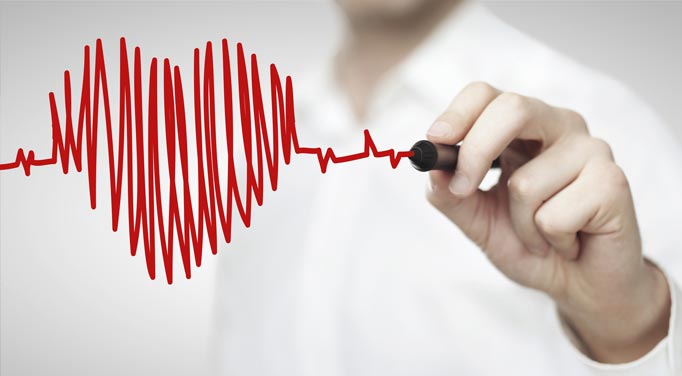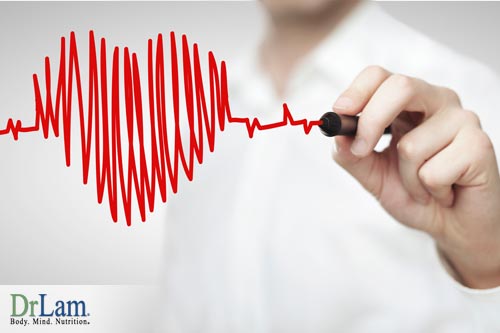 So, what is lone atrial fibrillation anyway? Lone Atrial Fibrillation (LAF) is an abnormal irregular and fast heart rate where electrical signals are generated chaotically throughout the upper chambers (atria) of the heart. How do you acquire lone atrial fibrillation?
So, what is lone atrial fibrillation anyway? Lone Atrial Fibrillation (LAF) is an abnormal irregular and fast heart rate where electrical signals are generated chaotically throughout the upper chambers (atria) of the heart. How do you acquire lone atrial fibrillation?
AF is common in the elderly. Its prevalence, estimated to be 2.3 percent in those over 40, increases to 5.9 percent in people 65 years and older. By age 70, 10 percent have this heart rhythm disorder. Seventy percent of the people who have AF are between 65 and 85mag years old. It affects over 2 million Americans and is the cause of about one-third of all strokes in people over the age of 65. It is the most frequently diagnosed arrhythmia in the clinical setting.
Most of the older patients with AF have associated hypertension, ischemic heart disease, congestive heart failure, and underlying conditions such as mitral valve disease, hyperthyroidism, and pulmonary disease. In some families, AF appears to have an inherited basis (although most people with AF do not have an inherited form).
In those under 40, the prevalence of AF is estimated to be less than 0.004%. AF in younger and active patients is more likely to be a manifestation of congenital heart disease, hyperthyroidism, excess alcohol or other drug use, including caffeine, and exercise-induced catecholamine release. In this group, the exact cause often cannot be found. Such cases are labeled Lone Atrial Fibrillation.
Let us first understand the basics of how electrical conduction works in the heart.
The heart is a pump that needs an electrical system to trigger to keep the chambers contracting in a coordinated fashion. To do that, the heart has its own built-in pacemaker called the SA node (Sino-atrial node) located on the wall of the right atrium. It sends out impulses at about 60 to 100 beats per minute, to both the right and left upper chambers (atria) of the heart, telling them the exact moment to beat. The SA node sets the rate the heart beats to meet the body's demands: slow at rest, and fast during excitement.
From the SA node, the impulse travels through the AV node (atrial-ventricular node), the "gatekeeper" of impulses, to the lower chambers of the heart (ventricles) via the bundle of His, telling the ventricles it's their turn to beat. The sequence of this electrical event causes the atria to beat first and a split second later, the ventricles to beat. This is the normal sinus rhythm characteristic of a normally functioning heart.
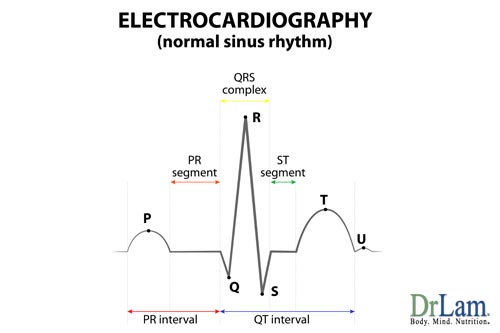 During AF, the normal sinus rhythm is disrupted by a very rapid, uncontrolled, and disorganized rhythm. The normal flow of electricity activity is upset by what can be best described as numerous little tornadoes wandering about in the atria. Instead of initiation of conduction from the SA node to the AV node in the normal sinus rhythm, the atrium's activity proceeds instead as multiple wavelets. Consequently, the atria beat so rapidly (as fast as 300 to 350 beats per minute) that they quiver (fibrillate). Such fibrillation does not result in effective contraction of the atrial muscles and therefore the pumping action at the atria is not strong. In addition, the rapid atrial rate effectively overrides any activity from the SA node. In other words, these rapid wavelets take control of the atrium. Most of these rapid wavelets are non-productive. Some of them reach the AV node, and then onto the ventricles. This causes the ventricles to pump in a rapid and irregular pattern in response as well. The heart with AF beats irregularly and there is no consistent pattern to such irregularity.
During AF, the normal sinus rhythm is disrupted by a very rapid, uncontrolled, and disorganized rhythm. The normal flow of electricity activity is upset by what can be best described as numerous little tornadoes wandering about in the atria. Instead of initiation of conduction from the SA node to the AV node in the normal sinus rhythm, the atrium's activity proceeds instead as multiple wavelets. Consequently, the atria beat so rapidly (as fast as 300 to 350 beats per minute) that they quiver (fibrillate). Such fibrillation does not result in effective contraction of the atrial muscles and therefore the pumping action at the atria is not strong. In addition, the rapid atrial rate effectively overrides any activity from the SA node. In other words, these rapid wavelets take control of the atrium. Most of these rapid wavelets are non-productive. Some of them reach the AV node, and then onto the ventricles. This causes the ventricles to pump in a rapid and irregular pattern in response as well. The heart with AF beats irregularly and there is no consistent pattern to such irregularity.
The Autonomic Nervous system controls the internal workings of the body and maintains its homeostasis. It is responsible for many bodily functions, including regulating heart rate, blood pressure, and digestive system. It originates in the hypothalamus region of the brain from where it divides into two branches - the sympathetic (adrenergic) branch and the parasympathetic (vagal) branch. The neurotransmitter used in the adrenergic branch is norepinephrine (noradrenaline) and in the parasympathetic system is acetylcholine.
Norepinephrine increases muscle contractions and heart rate, while acetylcholine does the reverse. By continuously self-adjusting the secretion of these two neurotransmitters, the body is kept in perfect balance and the heart produces normal sinus rhythm. In times of stress or emergency, the body has a backup system of releasing more adrenergic neurotransmitters (epinephrine and norepinephrine), allowing the execution of the "fight or flight" response necessary for survival. Such extraordinary release and/or excessive stimulation of adrenergic neurotransmitter often act as a trigger factor for AF.
When the ANS is imbalanced, AF can be the result. AF can be vagally mediated or sympathetically mediated. Vagally mediated lone atrial fibrillation typically is preceded by slow heart rate (bradycardia), is not triggered by stress, occurs more often at night, is more common in men, and occurs at a younger age. Sympathetically mediated lone atrial fibrillation is less frequent, typically occurs during the day, and can be triggered by stress. The heart rate in sympathetically mediated lone atrial fibrillation is higher before and during the episode in comparison with the vagal type.
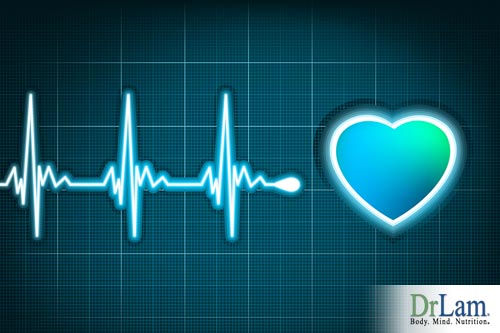 How is lone atrial fibrillation diagnosed? Most patients that have AF are diagnosed in the emergency room, complaining of fast and irregular heart rate with or without hemodynamic compromise. Diagnosis of AF (NOT LAF) is made based on EKG findings. A blood test is performed to rule out underlying metabolic and other causes of AF such as hyper-thryoidism, electrolyte imbalance, and cardiac diseases.
How is lone atrial fibrillation diagnosed? Most patients that have AF are diagnosed in the emergency room, complaining of fast and irregular heart rate with or without hemodynamic compromise. Diagnosis of AF (NOT LAF) is made based on EKG findings. A blood test is performed to rule out underlying metabolic and other causes of AF such as hyper-thryoidism, electrolyte imbalance, and cardiac diseases.
Treatment of underlying pathology will prevent AF from recurring. In cases where no underlying causes were identified, and in the absence of "abnormal" test results in an otherwise healthy person, the term Lone Atrial Fibrillation (LAF) is used to describe such "idiopathic" condition. LAF is therefore a diagnosis by exclusion, used when no specific predisposing factor or underlying pathology can be found. AF in these individuals is usually intermittent, but can become chronic in 25% of those affected.
What are the causes of lone atrial fibrillation? From a holistic and simplistic perspective, LAF can be viewed as a messenger and a warning signal. It is the body's way of responding to neurotransmitter imbalances and or cardiac cell dysfunction as a result of imbalanced sympathetic tone, parasympathetic tone, cardiac node sensitivity, and a combination of and or an overcompensation of any of the above.
It is the sum interaction of all of the above and resultant dysfunction to produce AF instead of normal sinus rhythm that is the foundational basis of LAF. It can be considered a part of a series of degenerative disease associated with aging and its sub-clinical, transitional, and clinical phase. In the case of LAF, it is the premature aging of the electrical system of the heart.
Theoretically, LAF is a diagnosis by exclusion. This diagnosis is established in only after excluding all known causes. In reality, we do know other possible causes of LAF, for none of which we are able to identify the precise mechanism of action yet. The reason is simple - our current laboratory test measurements are not sensitive enough to measure changes at the intra-cellular level responsible for the triggering of LAF.
The intelligent researcher realizes that the lack of tests to identify the precise etiology does not equate to no etiology. For half a century, physicians knew that smoking caused lung disease based on clinical experience alone. However, it is only in the past 20 years that researchers have been able to pinpoint the precise toxins and free radicals responsible for the dysfunctional cellular mutations leading to cancer.
Research takes time, especially when conducted in the western scientific approach of cause and effect, focusing on objectivity, double-blind studies, and verifiability. The normal cycle from basic science discovery, theory formation, preliminary testing, animal studies, clinical trials, publication of findings, acceptance to by mainstream medicine, adoption by medical schools, teaching to medical students who 20 years later become mature professionals ready to start the next cycle takes decades.
Causes of AF not routinely considered include oxidative stress and mitochondria dysfunction. The precise mechanism of action is not fully understood yet. Accurate and precise testing of intracellular damage from oxidative stress and mitochondrial damage resides mostly in the research laboratory and not at commercial clinical laboratories.
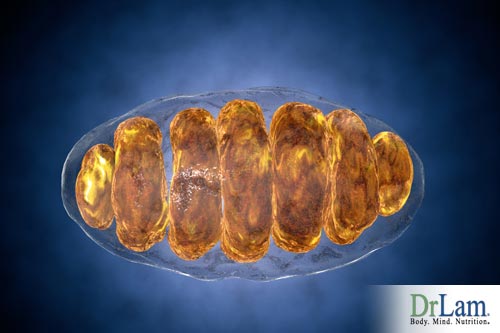 Each of our cells contains, on average, 500 to 2,000 little "factories" called mitochondria that are responsible for supplying ATP, the energy currency of our body. The respiratory chain inside the mitochondrion is an assembly line of protein complexes that combines electrons with oxygen to generate potential energy in the form of ATP. When the mitochondria are not working properly, the effects are particularly apparent in parts of the body with high-energy requirements, such as the nervous system, skeletal muscles, and heart.
Each of our cells contains, on average, 500 to 2,000 little "factories" called mitochondria that are responsible for supplying ATP, the energy currency of our body. The respiratory chain inside the mitochondrion is an assembly line of protein complexes that combines electrons with oxygen to generate potential energy in the form of ATP. When the mitochondria are not working properly, the effects are particularly apparent in parts of the body with high-energy requirements, such as the nervous system, skeletal muscles, and heart.
Japanese researchers have shown that structural changes in the number, size, and shape of mitochondria have been observed in the atrial muscles of patients with AF. Deletion of mitochondrial DNA associated with aging or AF can lead to a bioenergetic deficiency due to impaired ATP synthesis in the human atrium.
During AF, especially the early phases, rapid firing upsets the normal optimum balance between energy demand and supply. This results in an increase in energy demand during the early phase of AF and increased workload on the mitochondria.
In addition to the mitochondria's conventional role of acting as an energy factory, which takes up only 3 percent of the genes necessary, the other 95 percent (2,900 of 3,000 genes) are involved with other functions tied to the specialized duties in each of the 250 different cell types in which the mitochondria resides. These duties change as we develop from embryo to adult, and our tissues grow, mature, and adapt to the postnatal environment. These other, non-ATP related functions are intimately involved with most of the metabolic pathways used by a cell to build, break down, and recycle its molecular building blocks. In the liver, it is specialized to detoxify ammonia in the urea cycle. Mitochondria are also required for cholesterol metabolism, for estrogen and testosterone synthesis, for neurotransmitter metabolism, and for free radical production and detoxification. They do all this in addition to breaking down (oxidizing) the fat, protein, and carbohydrates we eat and drink.
Clearly, mitochondria biology is one of the fastest growing areas in genetics and medicine, connecting scientific disciplines ranging from embryology to cancer to infections. A host of disorders associated with mitochondria dysfunction includes aging, Type II diabetes mellitus, hypertension, cancer, atherosclerosis, osteoarthritis, and Alzheimer's disease.
While still in the postulation phase, it is highly conceivable that LAF will prove, in time to come, to be another form of mitochondria dysfunctional disease caused largely by oxidative stress. Those already afflicted with LAF may not have the time to wait for science to catch up. Fortunately, prevention of mitochondrial damage in the cardiac system can be achieved nutritional supplementation specific for the heart.
What are the treatments for lone atrial fibrillation. Successful management of AF from the traditional medical approach involves controlling the risk factors, slowing the rapid heart rate, preventing strokes and other blood clot embolization, and converting the irregular rhythm back to normal rhythms whenever possible. Accordingly, stimulant drugs and alcohol should be eliminated. Abnormal blood pressure, thyroid, and oxygen levels are therefore corrected. Underlying heart failure and other diseases of the heart and lungs should be treated accordingly. Some of the medicines to slow the rapid beating of the ventricles include digitalis (Digoxin), beta blockers, propranolol (Inderal), atenolol (Tenormin), metoprolol (Lopressor), esmolol (Brevibloc), calcium blockers verapamil (Calan), and diltiazem (Cardizem)
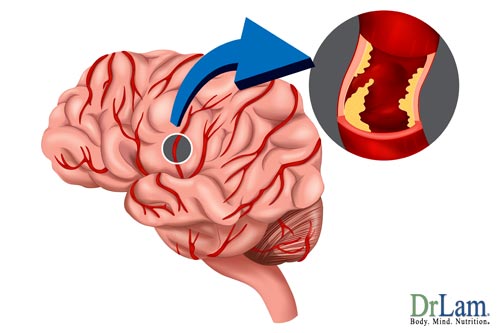 Patients with AF have an increased risk for a blood clot traveling to the brain, resulting in death of brain tissues (embolic stroke). Blood thinners such as warfarin (Coumadin) are commonly used to reduce this risk.
Patients with AF have an increased risk for a blood clot traveling to the brain, resulting in death of brain tissues (embolic stroke). Blood thinners such as warfarin (Coumadin) are commonly used to reduce this risk.
Cardioversion (conversion of the heart rhythm back to normal) is needed for those with persistent AF. It can be performed with either electrical shock to the chest, or with medications.
Ablation procedures are used as a last resort in cases of refractory AF. Arrhythmia is terminated by introducing catheters into the heart and directing energy at specific areas of heart tissue found to be the source of the irregular rhythms. An electrophysiology study is performed to discover the location and the characteristics of the arrhythmia. Once the specific location is mapped, then special catheters are precisely placed and radio frequency energy is passed down the catheter to the heart tissue. The abnormal tissue is destroyed and is unable to initiate or to conduct any type of electrical impulse.
What is the truth about modern medicine and its relationship to lone atrial fibrillation? Modern medicine can be spectacularly successful and woefully inadequate. It alternatively inspires praise and condemnation. In the case of LAF, it is well known that the current western protocol of drugs and ablation is only a temporary band-aid at best. At worst, it masks the underlying symptom and may actually promote rapid deterioration of the heart's sensitivity to the already imbalanced autonomic nervous system.
There is no doubt that advance stages of LAF requires drugs -based intervention to ensure stable hemodynamic flow and prevent stroke formation. Unfortunately, such a drug-based program is often started early on in the course of the disease as part of a standard medical treatment protocol. This may be over treatment and akin to killing a fly with a sledgehammer, especially in cases of the young and otherwise healthy patient without an adequate trial on lifestyle adjustment or other alternative treatments to rid the illness. The medical establishment dictates that such "protocol" is followed as a matter of routine. Most doctors are not taught alternative treatments in medical schools. In a litigious society, the medical-legal implications of trying alternative non-standard modalities can be wrongly interpreted as rendering substandard medical care.
The traditional approach of using drugs to control the heart rate, followed by medical cardioversion, electrical cardioversion, and ablation are only symptomatic treatments of LAF. Lucky are those that are "cured" by this approach. It is the best western medicine has to offer. There is an apparent need for a protocol that is more than a mechanical and technical band-aid approach to healing.
 Can the Chinese methods of treatment cure your lone atrial fibrillation? The Chinese have recognized LAF thousands of years back. In Traditional Chinese Medicine, the entire sum effect of the ANS system can be incorporated and described in one word - Qi (or "Chi" - pronounced "chee"). Qi is the word for "life energy". It is the animating power that flows through all living things. The living are filled with it. A dead person has no more Qi - the warmth, the life energy is gone. A healthy person has more than one who is ill. Being healthy implies that the Qi in our bodies is clear, rather than polluted and turbid, and flowing smoothly, like a stream, not blocked or stagnant. In simplistic western terms - a balanced Qi means a balanced ANS system, the way it is suppose to be. An imbalanced Qi encompasses an imbalanced ANS system and other illnesses.
Can the Chinese methods of treatment cure your lone atrial fibrillation? The Chinese have recognized LAF thousands of years back. In Traditional Chinese Medicine, the entire sum effect of the ANS system can be incorporated and described in one word - Qi (or "Chi" - pronounced "chee"). Qi is the word for "life energy". It is the animating power that flows through all living things. The living are filled with it. A dead person has no more Qi - the warmth, the life energy is gone. A healthy person has more than one who is ill. Being healthy implies that the Qi in our bodies is clear, rather than polluted and turbid, and flowing smoothly, like a stream, not blocked or stagnant. In simplistic western terms - a balanced Qi means a balanced ANS system, the way it is suppose to be. An imbalanced Qi encompasses an imbalanced ANS system and other illnesses.
The Chinese believes that the body is a complex unit that is an integral part of the universal, and Qi is the ultimate indicator of health. The lack of or imbalanced Qi is the root of all diseases in the body. You can never have too much Qi, but deficiency in Qi can be harmful. Everyone is bestowed with a healthy and optimum amount of Qi at birth. This is slowly and gradually depleted through the years if not replenished. Replenishment comes from doing Qi exercises and taking herbal soups. Rebuilding There is no short cut and the process cannot be hurried.
Even though having been around for 5000 years, the concept of Qi is non-existence in the western scientific model of cause and effect. Western doctors are trained to think of diseases in terms of cause and effect. In the absence of a well-documented cause, there is a tendency to treat the effect (symptoms) as a disease state. This works well for acute illness but its effectiveness is severely deficient when it comes to chronic disease where the cause is unknown. Treating chronic disease, including hypertension, arthrosclerosis, and AF with the western approach in a long run may cause more harm than good due to side effects from drugs and the possible masking of the disease at its root.
While neither approach is perfect, it can be said that the western approach is highly successful in dealing with acute illness, while the Chinese approach can be an important adjunct or even replace the traditional western treatment of chronic diseases such as lone atrial fibrillation. The open-minded physician and patient alike will find wisdom in this only concept only after exhaustive study into the limitations of western medicine and its approaches.
From the traditional Chinese medicine perspective, the cure of lone atrial fibrillation is straightforward - re-establish internal harmony, the balance of the right amount of Qi, and the disease will resolve itself. It is a simple yet important concept to grasp and understand.
Imbalanced Qi can be reinstated to perfect harmony through:
a. Avoidance of factors that can disturb the balance of Qi. This is equivalent to lifestyle and dietary control in modern day medicine such as avoidance of emotional stress and coffee, etc.
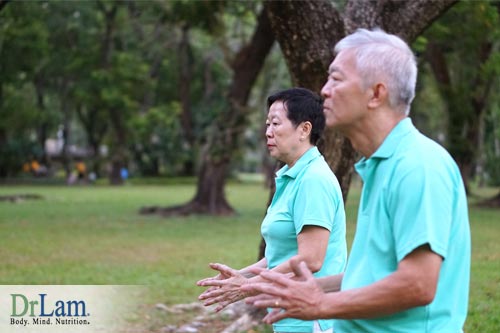 b. Use of mental relaxation techniques such as Qigong, Taichi, or variations of these to balance the Qi. This is equivalent to the use of biofeedback, meditation, mental imagery, etc. in modern day medicine.
b. Use of mental relaxation techniques such as Qigong, Taichi, or variations of these to balance the Qi. This is equivalent to the use of biofeedback, meditation, mental imagery, etc. in modern day medicine.
c. Use of Chinese herbal medicine to fortify the body against such Qi imbalance. This is equivalent to the use of nutritional supplements in modern day medicine and the use of herbs in Chinese medicine.
Since the 1970s, the western physician has slowly but surely come to recognize the importance of the above three-prong approach the Chinese have used for thousands of years to cure Qi imbalance (one symptom of which is what western doctors would call lone atrial fibrillation. Western doctors now embraced dietary modifications and mental relaxation as a standard recommendation for treatment of lone atrial fibrillation. Since the 1990s, acceptance of nutritional supplementation as a therapeutic modality has gained ground, facilitated by the acceptance of concepts such as free radicals, oxidative stress, and mitochondrial disease from research into mainstream medicine.
Clearly, lone atrial fibrillation is a disease state that cannot be explained by western medicine alone. Incorporating the best of the East and West may offer a sensible solution to a complicated issue.
The following protocol incorporates such a combination, with a focus towards eradicating this illness at its roots. It is presented and explained in the traditional western "cause and effect" model instead of the eastern "black box" model.
The earlier this lone atrial fibrillation protocol is started after the first attack, the better the rate of success for complete cure. The longer the body has been on medication, or the longer the heart has AF without some kind of systematic plan to slow down the progression of AF, the more potential damage the heart may have sustained, and the less the chances of success.
However, in this group, it is even more important that this protocol be followed more closely for the simple reason that the protocol acts as a palliative modality to slow the speed of the degenerative process and to limit the damage, buying time for the latest medical technology to advance and be available in the future.
Three important points to remember before you get started:
A. The lone atrial fibrillation Protocol consists of 11 separate strategies forming a "cocktail". Each strategy is equally important. It is the slow adaptation and gradual incorporation of these into a lifestyle that provides the maximum benefit.
To start, pick one strategy (the easiest one for you) and work on it for 3 weeks. After you are on track and comfortable at it, pick the 2nd strategy and so on. The entire protocol of 11 strategies takes 33 weeks to learn, and a lifelong to master. Do not try to start all at the same time. Some people may need more time with one particular strategy than others. Move onto the next strategy when you feel that you are on track with the current one. The body will tell you when you are ready as you will feel it. Remember that your heart has been damaged through the years. The key is to repair it gradually, as you will see the reason. Do not be over ambitious, as too fast a change can cause more harm than good.
 B. Read the protocol over every day for the first 3 weeks to understand the disease from a holistic perspective. Research has shown that it takes 21 days of repetition for us to internalize a new idea or habit. The path to wisdom is understanding. Once you understand why lone atrial fibrillation occurs from the holistic point of view, you will automatically start doing the right thing to prevent further episodes. After 3 weeks, you should have a better appreciation and respect for your body. You should be able to realize that taking care of your body involves a lot more than just "following the protocol". It starts with an attitude of respecting your body and seeing your body as part of the universe instead of a machine independent of your environment. Having your family members and loved ones read this with you is important so they know what you are going through.
B. Read the protocol over every day for the first 3 weeks to understand the disease from a holistic perspective. Research has shown that it takes 21 days of repetition for us to internalize a new idea or habit. The path to wisdom is understanding. Once you understand why lone atrial fibrillation occurs from the holistic point of view, you will automatically start doing the right thing to prevent further episodes. After 3 weeks, you should have a better appreciation and respect for your body. You should be able to realize that taking care of your body involves a lot more than just "following the protocol". It starts with an attitude of respecting your body and seeing your body as part of the universe instead of a machine independent of your environment. Having your family members and loved ones read this with you is important so they know what you are going through.
C. This protocol does not work 100 percent of the time, and none should be expected because about 30 percent of our illnesses are determined by our genes for which no therapy is available. The good news is that anti-aging research now shows that approximately 70 percent of bodily dysfunction, from cancer to hypertension, can be influenced and prevented to a great degree by lifestyle changes, leaving room for further control by medicine in advance stages. This protocol addresses the 70 percent of the dysfunction in which you can do something about. You can follow it in conjunction with a regular drug-based medical program most of the time, as there is little to loose.
Over 40 micronutrients are required in the human diet. The percentage of U.S. population that has a low intake (less than 50% RDA) for each of the eight key age-essential micronutrients (B12, folic acid, B6, niacin, vitamin C, vitamin E, iron,and zinc) ranges from 2 to over 20 percent. Half of the population may be deficient in at least one of these micronutrients and have double the chance of getting cancer compared to those who have sufficient nutrients on board. The modern day diet is also deficient of in magnesium, chromium, and many other important vitamins and minerals.
Aging is a process largely due to the oxidants produced as a by-product of normal metabolism by mitochondria. In old rats, mitochondrial membrane potential, respiratory control ratio, and overall cellular oxygen consumption are lower than in young rats. The level of oxidants and mutagenic aldehydes from lipid peroxidation is higher. This loss is reflected in 30 to 50 percent lower cellular oxygen consumption. In other words, significant mitochondrial decay occurs with age.
In addition to the lack of proper nutrition at the cellular level from poor dietary habits, free radicals from stress, fast food, pollution, and internal combustion attack the cellular protein and mitochondria. Antioxidant status in both the cystolic and mitochondrial fractions of the cell declines with age and thus increases the risk of oxidative damage to important biomolecules. The mitochondria are more vulnerable to oxidative damage than other sub-cellular organelles.
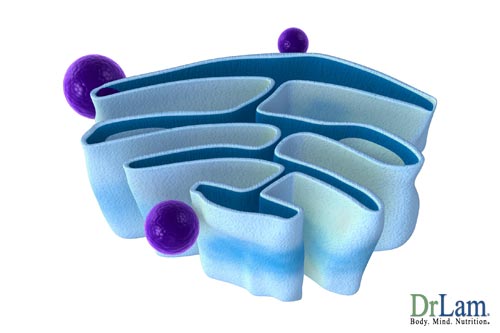 The mitochondrion is in effect the spark plug of each cell. Their function extrapolated to gross terms is equivalent to the nodes responsible for proper firing of the heart as an organ. Improper node function leads to AF. For those who believe that mitochondrial dysfunction contributes to or may be the cause of lone atrial fibrillation, it is logical to try to maintain mitochondrial function at its best. Reduction of oxidative stress through optimum nutritional supplementation above and beyond a good diet is essential. General age-essential micronutrient supplementation should include beta carotene (10,000-25,000 I.U.), vitamin Bs, vitamin C (500-2,000 mg), natural vitamin E (400-800 I.U.), selenium (100-200 mcg), chromium (100-400 mcg), and other minerals on a daily basis.
The mitochondrion is in effect the spark plug of each cell. Their function extrapolated to gross terms is equivalent to the nodes responsible for proper firing of the heart as an organ. Improper node function leads to AF. For those who believe that mitochondrial dysfunction contributes to or may be the cause of lone atrial fibrillation, it is logical to try to maintain mitochondrial function at its best. Reduction of oxidative stress through optimum nutritional supplementation above and beyond a good diet is essential. General age-essential micronutrient supplementation should include beta carotene (10,000-25,000 I.U.), vitamin Bs, vitamin C (500-2,000 mg), natural vitamin E (400-800 I.U.), selenium (100-200 mcg), chromium (100-400 mcg), and other minerals on a daily basis.
It is not unusual for a complete cardiac and optimum health nutritional supplement program to contain 10 to 20 tablets in 2-3 divided dosages. Different nutrients have different target functions. For example, Vitamin C works well within a water-soluble environment outside the cell, while vitamin E is fat-soluble and therefore can penetrate the cell wall and works intracellularly. Long-term studies have shown that taking a proper combination of nutritional supplements is far more effective than taking any single nutritional supplement alone. Taking the proper nutritional supplement "cocktail" should therefore form the foundation of optimum health.
Many in the forefront of nutritional research are of the view that taking vitamins and minerals based on the Recommended Daily Allowance (RDA) is insufficient to overcome oxidative stress. They are advocating a much higher dose, often called the Optimum Daily Allowance (ODA). While the ODA is very safe, generally speaking, it should be noted that vitamin E and gingko both have blood- thinning properties. Those already on anti-coagulant therapy such as warfarin or aspirin regularly should refrain from taking high doses of these two supplements without consulting their physician.
Recommended Range of Basic Nutritional Supplementation for men and women (unless specifically mentioned) is listed below. The low end of the range is the basic minimal Optimal Daily Allowance required. Advance to the high end of the range for maximum benefit as tolerated.
Vitamin A (in the form of beta carotene): 5,000 - 15,000 I.U.
Vitamin C (Ascorbic Acid): 500 - 2,000 mg (chelated form usually not necessary)
Magnesium Oxide: 300-500 mg for men, 500-1000 mg for women (chelated form not necessary)
Calcium: 150-300 mg for men, 300 - 600 mg for women (chelated form not necessary)
Chromium (in chelated form): 100 - 300 mcg
Citrus Bioflavoids: 50 - 200 mg
Evening Primrose Oil: 300 - 600 mg (for women age over 35 only)
Folic Acid: 350 -1000 mcg
Vitamin E (natural alpha d-tocopherol): 100 - 400 I.U.
Vitamin B1: 50 - 100 mg
Vitamin B2: 25 - 50 mg
Vitamin B3: 50 - 100 mg
Vitamin B6: 50 - 100 mg
Vitamin B12: 50 - 1,000 mcg
Vitamin D: 50 - 100 I.U.
Saw Palmetto: 160 - 320 mg (for men age over 35 only)
Selenium (in chelated form): 100 - 200 mcg
Avoid Supplements that contain Iron unless you are anemic.
The above is a general guideline for those who are healthy . Since everyone is different, always consult your physician before proceeding with any nutritional supplementation program.
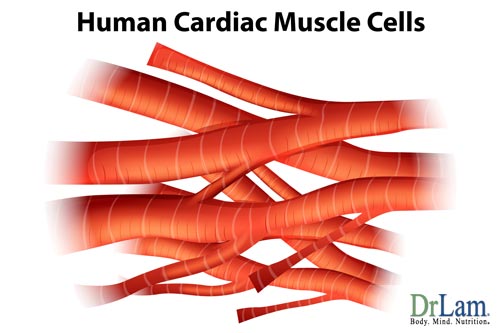 The energy factory of each cell is the mitochondria. Cardiac cells have the highest density of mitochondria in the body due to their continuous non-stop firing function around the clock. Any enhancement of energy production by increasing the efficiency of the mitochondria will enhance cardiac health. Nutritional supplements targeted specifically to the enhance cardiac function, particularly the mitochondria, include coenzyme Q10, L-carnitine, Lipoic Acid, Hawthorne Berry, and Magnesium. Start at the low end of the dosages of these important cardiac enhancing micronutrients and slowly work your way up as tolerated.
The energy factory of each cell is the mitochondria. Cardiac cells have the highest density of mitochondria in the body due to their continuous non-stop firing function around the clock. Any enhancement of energy production by increasing the efficiency of the mitochondria will enhance cardiac health. Nutritional supplements targeted specifically to the enhance cardiac function, particularly the mitochondria, include coenzyme Q10, L-carnitine, Lipoic Acid, Hawthorne Berry, and Magnesium. Start at the low end of the dosages of these important cardiac enhancing micronutrients and slowly work your way up as tolerated.
Coenzyme Q10, also known as CoQ10, is an enzyme that is made by the body and is also found in seafood. After about age 20, and continuing as we age, the body's production of CoQ-10 slows down, declining by 50%. By age 70, only 50% of the CoQ10 is produced.
CoQ10 can be found in many different products including fatty fish (such as sardines) and organ meats such as heart, liver, and kidney. It can also be found in beef, soy, and peanuts. Diet alone does not provide sufficient CoQ10. For example, 1 pound of sardines or 2.5 pounds of peanuts is needed to provide 30 mg of CoQ10. Vitamin E, selenium, and the B vitamins all enhance and boost the biosynthesis of CoQ10 internally.
CoQ10 is a powerful antioxidant and stabilizes cell membranes. It also energizes and facilitates the efficiency of the mitochondria. The range of heart conditions for which research has found CoQ10 to be beneficial includes congestive heart failure, cardiomyopathies, arrhythmias, and angina when there is a lack of oxygen and muscular dystrophy. In some countries, cardiologists prescribe CoQ10 to patients with congestive heart failure. In Japan, more than 10 million Japanese take CoQ10 as a prescription drug for cardiac problems. Common intake: 30-150 mg per day.
L-Carnitine is a semi-essential nutrient that acts as a transport carrier of fatty acid into the mitochondria where energy is produced. It is made from two essential amino acids (lysine and methionine). In addition to the transport function, L-Carnitine helps in the metabolism of the fat within the mitochondria to generate energy. Studies have shown that dietary supplementation of L-carnitine markedly improves the overall mitochondrial function. The amount found in whole foods such as meat is unfortunately small. Common intake: 300 - 2,000 mg per day.
Lipoic Acid is called the universal antioxidant because of its ability to be both water and fat-soluble. It has the ability to recycle vitamin C, vitamin E, and glutathione. Research has shown that dietary supplementation of Lipoic acid reverses the age-related loss in both cytosolic and mitochondrial glutathione from old animals. Reduced glutathione is a tripeptide (g-glutamylcysteinylglycine). It functions as a coenzyme in amino acid transport, detoxification of carcinogens, synthesis of DNA precursors, and as an antioxidant. Common intake 100-700 mg per day.
Hawthorn Berry is an herb that enhances coronary artery blood flow as well as contraction force of heart muscle. This results in the increase of blood flow to the extremities. Increased oxygenation as a result of better circulation also enhances transportation of nutrient to and from the cell. Common intake: 100 - 600 mg per day.
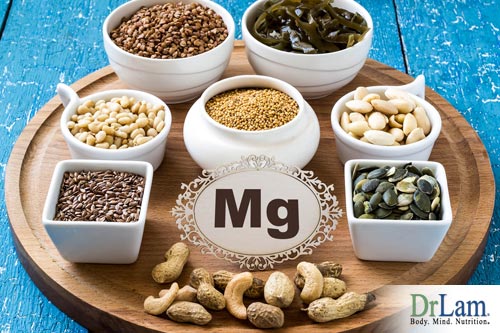 Magnesium is the most important mineral for LAF. It helps regulate neuromuscular activities of the cell and the mitochondria. It is a necessary component without which the mitochondria cannot produce energy. Advanced age and a low plasma magnesium concentration are two key risk factors for AF.
Magnesium is the most important mineral for LAF. It helps regulate neuromuscular activities of the cell and the mitochondria. It is a necessary component without which the mitochondria cannot produce energy. Advanced age and a low plasma magnesium concentration are two key risk factors for AF.
The intravenous application of magnesium is an effective method of treating supra-ventricular arrhythmias such as AF in the hospital setting. It also has been shown to be an effective means of reducing the incidence of atrial tachyarrhythmias after cardiac and non-cardiac thoracic surgery.
Unfortunately, the common American diet is high in calories and low in nutrition, resulting in a malnutrition epidemic of massive proportions. The modern day diet supplies limited magnesium a day, and most Americans are deficient in magnesium even by RDA standards of 300 mg a day and are not even aware of it. Common prophylactic intake of 400 mg to 1000 mg a day as a nutritional supplement is recommended. Excessive magnesium can cause diarrhea. Most can tolerate taking up to 1,000 mg supplement without problems. If you are getting loose stool, cut back and take enough that does not give you the runs. Do not take high levels of magnesium if you have kidney problems.
Recommended Optimal Daily Allowance to enhance cardiac health is as follows. Start with the low end of the range. The upper range should be taken under the supervision of a physician.
Coenzyme Q10: 50 - 200 mg
Hawthorne Berry: 200 - 1000 mg
L - Carnitine: 500 - 2500 mg
Lipoic Acid:150 - 450 mg
Magnesium: 400 - 850 mg. Too much magnesium can cause diarrhea. This is uncommon below 850 mg. Those who are already taking Magnesium should be careful not to overtake. Up to 1200 mg a day total usually is well tolerated. Those with kidney problem or special health concerns should not take high dose Magnesium without consulting their physician.
The above is a general guideline for those who are healthy. Since everyone is different, always consult your physician before proceeding with any nutritional supplementation program.
The heart is a muscle, and the only way to strengthen a muscle, whether it is your biceps or the heart, is to stress it, causing micro-tear of the myofilaments. The body will undergo self-repair and it is during this self-repair process that the myofilaments get stronger as new muscle cells are formed.
In the case of a patient with lone atrial fibrillation, cardiovascular exercise must take into consideration the already damaged electrical firing system of the heart. This is best done through a consistent exercise program that is moderate in intensity. The key words are consistency and moderation. This cannot be overemphasized.
One cannot stress only the muscle of the heart without stressing the electrical system at the same time. Some studies have suggested that the disorder may be more prevalent among people who exercise strenuously. The key is moderation and consistency, rather than short-term peak performance. Imagine you are running a marathon rather than the 100-meter dash during your aerobics program. It may sound ironic but those who developed AF while in peak cardiovascular performance and condition may need to consider toning down the exercise down to a more moderate level if the AF is due to sympathetic overtone.
 All it takes to exercise the heart is consistent aerobic exercise 30 minutes a day at 70-80% of maximum heart rate (approximate maximum heart rate is equal to 220 less your age). Studies have shown that exercise can be further broken up into 10-minute blocks and the 30 minutes need not be continuous. Make sure you take some time for a proper warm-up and cool down as well. The lone atrial fibrillation heart comes from a body with a damaged autonomic nervous system (ANS) and imbalanced Qi. Both needs to be nurtured back to optimum balance. Slow down when you are short of breath, which is a sign that the heart is not getting enough oxygen. Your pace should be moderate, meaning that you can conduct a conversation with relative ease during the exercise.
All it takes to exercise the heart is consistent aerobic exercise 30 minutes a day at 70-80% of maximum heart rate (approximate maximum heart rate is equal to 220 less your age). Studies have shown that exercise can be further broken up into 10-minute blocks and the 30 minutes need not be continuous. Make sure you take some time for a proper warm-up and cool down as well. The lone atrial fibrillation heart comes from a body with a damaged autonomic nervous system (ANS) and imbalanced Qi. Both needs to be nurtured back to optimum balance. Slow down when you are short of breath, which is a sign that the heart is not getting enough oxygen. Your pace should be moderate, meaning that you can conduct a conversation with relative ease during the exercise.
Generally speaking, try to avoid the "roller coaster" type pattern of exercise frequently seen in "weekend athletes". Sudden overstress of your heart can lead to excessive release of epinephrine and over stimulation of the ANS, triggering AF episodes. Paradoxically, exercise also increases the vagal response and has been shown to abort LAF attacks. The key is to listen to your body and follow what you feel comfortable with. You may be one of the exceptions to the general rule.
Those who perform strength training using weights should also be careful not to be overly exertive during the lifting episode. It is not unusual to have an "adrenaline" rush during the training as you try to lift the maximum amount of weight. It is better to do more repetitions at 60 to 70 percent of your maximum lifting capacity than to do one or two repetitions at your maximum lifting capacity if you have a sensitive ANS.
Both physical and emotional factors are known to be stimulants of the autonomic nervous system and trigger factors for AF, including well known ones such as: coffee, tea (especially green tea which contains high level of caffeine), soda pop, chocolate, emotional stress, pollution, allergens, and hypoxia (high altitude).
Emotional stress such as engaging in a heated argument, the death of a loved one, changing jobs, moving (house), and financial difficulties can all act as trigger factors. Stress reduction can be accomplished with consistent breathing exercises, qigong, and biofeedback techniques.
Often overlooked stressors can include drugs, herbs, and over-the-counter medications that may stimulate the ANS and further its imbalance, including:
The threshold to triggering AF differs from person to person and there is no standard rule.
Other less common but nevertheless are stressors include:
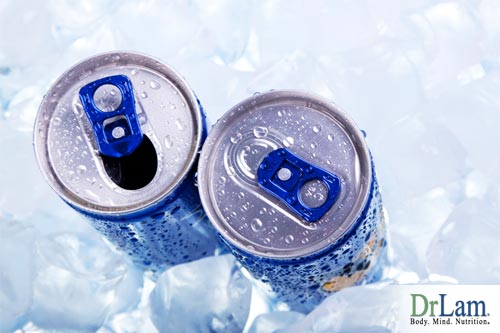 a. Cold liquid (cold drinks, ice cubes, or ice cream).
a. Cold liquid (cold drinks, ice cubes, or ice cream).
b. Constipation and the resulting Valsalva Maneuver (straining during bowl movement) that can activate the vasovagal response. Rx- Take digestive enzymes and magnesium (a laxative in higher dose)
c. Excessive Salt intake.
d. MSG (monosodium glutamate which causes Chinese Restaurant Syndrome) as a food-seasoning additive.
e. Gastric reflux.
f. Sudden exposure to cold wind.
g. Heavy alcoholic drinking, which can result in increased adrenergic activity and magnesium depletion.
The LAF patient should be mindful of the fact that change itself, especially if drastic and sudden, is a stress signal to the ANS. Any change the body is not accustomed to will produce stress. While negative stressors are harmful, the body is often so sensitive that it reacts violently to any stress out of the ordinary. Be mindful that the autonomic nervous system of the lone atrial fibrillation patient is highly sensitive to the smallest change. It is the small change that triggers an overreaction by the body that often results in AF. The prudent lone atrial fibrillation patient is mindful of these small but significant stressors.
The key is to maintain a low-key homeostasis uniquely suited to your body and no one else. This is best accomplished by listening to your body closely over time.
Maintaining the body at ideal body weight or slightly below (3-5% below) to reduce the physical cardiac workload is an important but often overlooked consideration. Average ideal body weight for men is 106 pounds for the first 5 feet of height and 6 pounds for each inch above that. Average ideal body weight for women is 100 pounds for the first 5 feet of height and 5 pounds for each inch above that.
The heart is the main engine of the body. During the aging process, the heart's pumping ability reduces decreases due to reduced muscle mass. The amount of blood pumped is less per beat as a result of the aging process, if all other factors remain unchanged.
Also as you age, your body's metabolism rate also slows down. You only need 60 to 70 percent of the calorie intake at age 60 to maintain the same weight compared to when you were 20 years old. A calorie restriction program may be warranted to prevent obesity and lighten the pumping load of the cardiac muscle for those who are overweight.
The smart way to reduce cardiac workload, therefore, is to reduce the weight of the body that the heart must pump blood to by maintaining the ideal body weight and making the heart stronger by moderate intensity aerobics exercise.
 Curtail as much as possible any trans-fat (commonly found in fried foods and margarine) that has been shown to increase oxidative stress and free radical formation. Milk should also be avoided as it is a high allergenic food. It also contains casein, an animal protein that is hard to digest. Go for an after-dinner walk. This will increase the much-needed oxygenation and prevent diversion of blood and oxygen supply from the heart to the digestive system after a big meal. Many have switched to smaller but more frequent meals and have experienced good results. Dinner should be the lightest meal of the day.
Curtail as much as possible any trans-fat (commonly found in fried foods and margarine) that has been shown to increase oxidative stress and free radical formation. Milk should also be avoided as it is a high allergenic food. It also contains casein, an animal protein that is hard to digest. Go for an after-dinner walk. This will increase the much-needed oxygenation and prevent diversion of blood and oxygen supply from the heart to the digestive system after a big meal. Many have switched to smaller but more frequent meals and have experienced good results. Dinner should be the lightest meal of the day.
If you have to run an old car, you would not want to put too many passengers to overstress an already worn out engine. For many, this analogy drives home the point.
Sugar imbalance could be a trigger of lone atrial fibrillation. They key word is imbalance. Either too high or too low a sugar level can problematic. It is not uncommon to get an emotional high and adrenaline surge after a meal rich in sugar. In addition, high sugar intake can lead to blood sugar imbalance (first high and then low as the body over-release insulin), which is one of the key stressors in the body that may elicit an ANS response. Cut down on sugar intake by 80-90 percent if you are eating an average American diet high in refined sugar. Minimize fruit juice, ice cream, and dessert. High glycemic index grains that are converted easily and quickly into sugar once inside the body should be avoided. These include rice, wheat, and corn products. It is also important to refrain from taking vegetables that are grown underground, such as potatoes and yams. These vegetables have a high glycemic index. Focus on complex carbohydrates from vegetables grown above the ground such as cabbage, tomato, and broccoli. These do not cause fast sugar spikes once inside the body. Follow the anti-aging Modified Mediterranean Diet consisting of 50 percent low glycemic complex carbohydrate and green leafy vegetables rich in fiber, 25 percent protein from eggs and lean meat; and 25 percent fat from meat and fish. Avoid big meals which can lead to sugar imbalance and diversion of much needed oxygenation and blood flow away from the heart to the gastrointestinal tract. If you are eating 3 meals, make the breakfast the largest, with a moderate lunch and an early and light dinner. Some have found it helpful to take 5-6 small meals instead of 3 large meals a day. Late night desserts should be curtailed to prevent rising cortisol levels. Do not use artificial sugar. Maintaining a fasting blood sugar level at the low end of laboratory normal between 90-100 mg/dl is optimal
Increasing the resting time of the heart through reducing resting heart rate. The less frequent the heart has to beat, the longer it will last.
Moderate consistent aerobic exercise will reduce the resting heart rate over time. Other techniques that accomplish the same include meditation, biofeedback, qigong, and mental imagery. These activities lower the body's heart and respiration rates and stimulate the parasympathetic system, causing an overall relaxation response. This is the exact opposite state that is brought on by anger or anxiety and the "fight or flight" response commonly associated with stress and anxiety and AF attacks.
 When the body is relaxed, the rate of metabolism and rate of oxygen utilization is low. The heart rate is slowed, resulting in a decrease in carbon dioxide production and lactic acid concentration in the blood. Blood lactic acid levels are related to anxiety and tension. The low levels of blood lactic acid found in relaxation and meditation are very likely related to the relaxed state of meditators. In fact, it has been shown that the blood level of lactic acid in meditators is nearly 4 times as low as those who are meditating compared to those who are not. Higher levels of lactic acid have been found in cardiac cells with arrhythmias such as AF.
When the body is relaxed, the rate of metabolism and rate of oxygen utilization is low. The heart rate is slowed, resulting in a decrease in carbon dioxide production and lactic acid concentration in the blood. Blood lactic acid levels are related to anxiety and tension. The low levels of blood lactic acid found in relaxation and meditation are very likely related to the relaxed state of meditators. In fact, it has been shown that the blood level of lactic acid in meditators is nearly 4 times as low as those who are meditating compared to those who are not. Higher levels of lactic acid have been found in cardiac cells with arrhythmias such as AF.
Here is a simple but effective way to relax. It involves learning to tighten and relax the body's major muscle groups one at a time, being aware of each sensation. Start at your feet and work your way up to your head. Tense the muscle group for a count of ten. Concentrate on the tension and then let the muscle go lax and breath deeply, enjoying the sensation of each release. Performing this simple and progressive and relaxation exercise while you are lying down in a quiet room can work wonders!
Feeling tired is the body's signal of an internal decompensating system. Listen and do NOT argue with your body. Rest is the ONLY solution. A restful night is a key ingredient helping many to deals with the daily stresses of life. Research has linked sleep deprivation with increased cortisol release. Cortisol is the stress hormone that increases with age and causes a variety of premature aging and onset of degenerative disease. Furthermore, cortisol excretion has been associated with and has proved greatest in the hours of paroxysmal arrhythmias. Adopt a consistent sleep time in line with your unique natural diurnal biorhythm. If you are a night owl, stay that way and don't change your sleeping habits. Regardless of whether you are a late owl or early bird, a consistent bedtime is important. Staying up beyond your sleep time can trigger an adrenergic surge as the body tries to release the extra hormone to keep you alert.
Your body will wake itself up after sufficient sleep. If you need an alarm clock to wake up, chances are you are sleep deprived. Do make sure that you sleep in total darkness to maximize the production of melatonin. Melatonin is a hormone that regulates our biorhythm. It is also a strong antioxidant.
 Most of us are dehydrated and do not know it. Proper hydration is needed for optimum electrolyte balance and electrical conduction of the cardiac cell. The only fluid to drink is 10-15 glasses of room temperature or slightly warm pure filtered water a day. Take more if you are exercising. It is important to start each day with 2 full glasses ( 8 oz. each ) of warm water to re-hydrate and sooth the body. Bottled water is the next best if you do not have filtered water, but stay away from tap water. Carrying a water bottle around is the simplest thing to do. Do not be embarrassed to do what is right.
Most of us are dehydrated and do not know it. Proper hydration is needed for optimum electrolyte balance and electrical conduction of the cardiac cell. The only fluid to drink is 10-15 glasses of room temperature or slightly warm pure filtered water a day. Take more if you are exercising. It is important to start each day with 2 full glasses ( 8 oz. each ) of warm water to re-hydrate and sooth the body. Bottled water is the next best if you do not have filtered water, but stay away from tap water. Carrying a water bottle around is the simplest thing to do. Do not be embarrassed to do what is right.
It is important for lone atrial fibrillation patients not to over hydrate suddenly or too quickly as the fast speed can increase sympathetic tone, especially if it is done after intensive exercise. Take your time to drink. Drinking very cold liquid should also be avoided as the cold temperature can activate the sympathetic nervous system.
To maximize the body's sensitivity to receive warning signals on a timely basis from the cells, it is imperative that the body be cleansed and detoxified. Without a clean body, signals sent by the cells to warn us of impending danger and attack may be masked or delayed.
For example, those who have optimized their normal fasting sugar level to 90 mg/dl may easily notice a difference (such as nervousness, fast heart rate, or sweaty palms) when the sugar fluctuates and goes up to 110 mg/dl or down to 80 mg/dl as the body decompensates before an AF attack. This can happen after a big meal for some people with imbalanced insulin response. On the other hand, those whose is already used to the higher toxic level consistently at 110-120 mg/dl may have a delayed sensitivity. They may only react when the sugar level goes up to 140-150 mg/dl or down to 80 mg/dl, at which time the AF attack may have been triggered already and it may be too late to initiate any preventive measures. The same principal can be applied to other toxins and triggers such as caffeine and MSG (food seasoning commonly used in Chinese Restaurants).
Similarly, toxic metal accumulation in the body such as lead, arsenic, and especially mercury, may be a potential trigger. Intracellular mercury level can be measured and is most accurate. Removal of amalgam should be considered for anyone interested in optimum health, regardless of whether AF is present. A home based detoxification program including juice fasting and colon cleansing should be carried out regularly to rid the body of unwanted toxins.
The liver is the major detoxification center of the body. Maintaining it in optimum health is critically important for the toxin-free body. This can be done through avoidance of external insults such as alcohol, and fortifying it through proper nutritional supplementation.
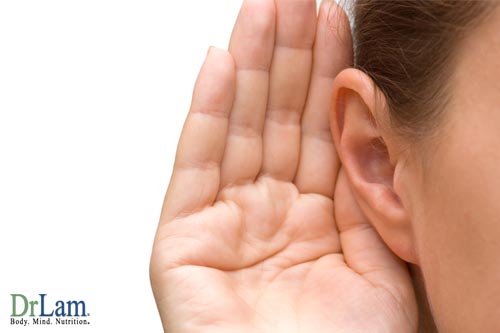 This is perhaps the most important strategy, if one has to be singled out. It is also the most simple and at the same time most difficult. Successful execution of this strategy forces you to be in tune with your body, and that is a difficult process if you are not used to it. Our body is designed as a complete closed system with a built-in warning and self-repair mechanism. Nowhere is this self-adjustment (needed in order for survival) more evident than in the ANS system. There are usually warning signs released by the body ahead of most illnesses, and lone atrial fibrillation is no exception. Most of us take our body for granted and does not give it the credit it deserves. In fact, few of us take the time to really listen closely to what our body is telling us on a daily basis. We are generally pre-occupied with work, family, and other projects. The majority of patients with lone atrial fibrillation reported that their body did try to tell them of an impending attack if they only listen.
This is perhaps the most important strategy, if one has to be singled out. It is also the most simple and at the same time most difficult. Successful execution of this strategy forces you to be in tune with your body, and that is a difficult process if you are not used to it. Our body is designed as a complete closed system with a built-in warning and self-repair mechanism. Nowhere is this self-adjustment (needed in order for survival) more evident than in the ANS system. There are usually warning signs released by the body ahead of most illnesses, and lone atrial fibrillation is no exception. Most of us take our body for granted and does not give it the credit it deserves. In fact, few of us take the time to really listen closely to what our body is telling us on a daily basis. We are generally pre-occupied with work, family, and other projects. The majority of patients with lone atrial fibrillation reported that their body did try to tell them of an impending attack if they only listen.
Do NOT argue with your body. It is always right. It will tell you much earlier and more accurately about your problems before most doctors can. Listen closely and you are likely to catch many of the telltale signs of lone atrial fibrillation that is unique to you and you alone. Some common signals include:
The body with AF has an abnormally high sensitivity to triggers. Being in tune with these triggers as early as possible allows us time to take preventive measures.
The body tries to keep itself in constant homeostasis. It mounts an inflammatory response to rid of external insults when such insults are perceived. This inflammatory response often acts as a trigger. What are the stressors that can initiate an inflammatory response? Infection is a common but frequently overlooked source of the inflammatory response. While acute and symptomatic infection is relatively easy to recognize and treat, chronic and sub-clinical bacterial, viral, fungal , and parasitic infection can often act as a stressor but remain undetected for decades. Common pathogens include Candida, Giardia, and H. Pylori. It is estimated that the risk of acquiring H. Pylori infection approaches 1% per year of age. A 50 year old adult therefore has about a 50% chance of acquiring this infection. H. Pylori have been implicated as the cause of 10% of all gastric ulcers. It is also implicated in inflammation of the myocardium as well as inflammatory response of the vascular endothelium, leading to a cascade of events that results in atherosclerosis and heart attack. 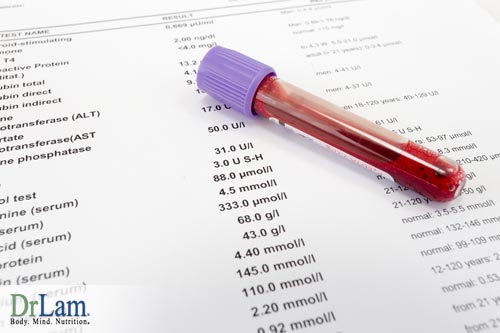 If you suspect that you may have a chronic infection, proper laboratory testing is mandatory. Routine laboratory culture and sensitivity testing is usually insufficient as it fails to culture out the infectious organism. Highly sensitive immunoglobulin asseys are normally needed to detect sub-clinical but chronic infections. Once diagnosed, proper antibiotics can be administered.
If you suspect that you may have a chronic infection, proper laboratory testing is mandatory. Routine laboratory culture and sensitivity testing is usually insufficient as it fails to culture out the infectious organism. Highly sensitive immunoglobulin asseys are normally needed to detect sub-clinical but chronic infections. Once diagnosed, proper antibiotics can be administered.
Lone atrial fibrillation (LAF) is a disease of the electrical circuit of the heart of unknown etiology. The Chinese calls it loss of or imbalanced Qi.The body's homeostasis has been thrown out of balance. Regaining that homeostasis and balance slowly and gently through nutritional supplementation, relaxation techniques, reducing cardiac workload, and following a meticulous plan to identify and avoid stressors unique to each person offer the best chances of successful eradication of this illness at its root.
Listen to your body and it will tell you over time when the balance is regained. Maintaining this balance consistently is the key to long-term prevention of any recurrence. If you are already on a drug-based program, it can be tapered off slowly as you regain and maintain your homeostasis.
A Must read for All A-fibers: Lone Atrial Fibrillation: Towards a Cure by Hans Larson
References
Ausma J, Atrial high energy phosphate content and mitochondrial enzyme activity during chronic lone atrial fibrillation. Cardiovasc Res 2000 Sep;47(4):788-96.
Chen YQ, Chen KJ, Sun FL Power spectral analysis of heart rate in qi deficiency and both qi and yin deficiency in patients with coronary heart disease. Zhong Xi Yi Jie He Za Zhi 1989 Feb;9(2):76-8, 67.
Diker E, Aydogdu S, Ozdemir M, et al: Prevalence and predictors of lone atrial fibrillation in rheumatic valvular heart disease. Am J Cardiol 1996;77(1):96-98.
Feinberg WM, Blackshear JL, Laupacis A, et al: Prevalence, age distribution, and gender of patients with atrail fibrillation analysis and implications. Arch Intern Med 1995;155(5):469-473.
Folkers K, Wolaniuk J, Simonsen R, et al. Biochemical rationale and the cardiac response of patients with muscle disease to therapy with coenzyme Q10. Proc Natl Acad Sci. 1985;82:4513-16.
Forfar JC, Miller HC, Toft AD: Occult thyrotoxicosis: a correctable cause of 'idiopathic' lone atrial fibrillation. Am J Cardiol 1997;44(1):9-12.
Fujioka T, Sakamoto Y, Mimura G. Clinical study of cardiac arrhythmias using a 24-hour continuous electrocardiographic recorder (5th report)-antiarrhythmic action of coenzyme Q10 in diabetics. Tohoku J Exp Med 1983;141(suppl):453-63.
Gaby AR. The role of coenzyme Q10 in clinical medicine: part II. Cardiovascular disease, hypertension, diabetes mellitus and infertility. Alt Med Rev 1996;1:168-75.
Gorman, Jack M. and Richard P. Sloan. Heart rate variability in depressive and anxiety disorders. American Heart Journal, Vol. 140, October 2000, pp. S77-S83.
Guedon-Moreau L, Kouakam C, Kacet S. Epidemiology of paroxysmal auricular fibrillation Arch Mal Coeur Vaiss 1998 Jan;91(1):67-71.
Gullestad L et al. The effect of magnesium versus verapamil on supraventricular arrhythmias. Clin Cardiol 1993 May;16(5):429-34.
Harper's biochemistry. Murray RK, Mayes PA, Granner DK, Rodwell VW, Eds. 22nd Ed. Appleton & Lange, San Mateo, California. p. 206-7.
Hanack T, Bruckel MH. The treatment of mild stable forms of angina pectoris using Crataegutt® novo. Therapiewoche 1983;33:4331-33 [in German].
Hays JV et al. Effect of magnesium sulfate on ventricular rate control in lone atrial fibrillation. Ann Emerg Med 1994 Jul;24(1):61-4.
Hypomagnesaemia after small bowel resection: treatment with 1 alpha-hydroxylated vitamin D metabolites. Selby-PL; Peacock-M; Bambach-CP. Br-J-Surg. 1984 May; 71(5): 334-7.
Kalman JM, Tonkin AM:Atrail Fibrillation epidemiology and the risk and prevention of stroke. Pacing Clin Electrophysiol 1992;15(9):1332-1346.
Kamikawa T, Kobayashi A, Yamashita T, et al. Effects of coenzyme Q10 on exercise tolerance in chronic stable angina pectoris. Am J Cardiol 1985;56:247.
Kirkin, BV. Cortisol metabolism in paroxysmol disorders of cardiac rhythm. Kardiologiia. 1975 Nov;15(11):111-5.
Kobusiak-Prokopowicz M, Mysiak A.The effect of intravenous magnesium on the arrhythmias in patients after electrical cardioversion. Pol Merkuriusz Lek 1999 Aug;7(38):51-3.
Krahn AD, Manfreda J, Tate RB, et al: The natural history atrail fibrillation: incidence, risk factors, and prognosis in the Manitoba Follow-Up Study. Am J Med 1995;98(5):476-484.
Morisco C, Trimarco B, Condorelli M. Effect of coenzyme Q10 in patients with congestive heart failure: a long-term multicenter randomized study. Clin Invest 1993;71:S134-36.
Mortensen SA, Vadhanavikit S, Baandrup U, Folkers K. Long-term coenzyme Q10 therapy: a major advance in the management of resistant myocardial failure. Drug Exptl Clin Res 1985; 11:581-93.
Mortensen SA. Perspectives on therapy of cardiovascular diseases with coenzyme Q10 (ubiquinone). Clin Invest 1993;71:s116-23.
Odeh, Majed, et al. Transient lone atrial fibrillation precipitated by hypoglycemia. Annals of Emergency Medicine, Vol. 19, May 1990, pp.565-67.
Rewerski VW, Piechoscki T, et al. Some pharmacological properties of oligomeric procyanidin isolated from hawthorn (Crataegus oxyacantha). Arzneim-Forsch Drug Res 1967; 17:490-1.
Scott, Eleanor M., et al. Water drinking and sympathetic activation. The Lancet, Vol. 356, December 9, 2000, p. 2013.
Tanaka J, Tominaga R, Yoshitoshi M, et al. Coenzyme Q10: the prophylactic effect on low cardiac output following cardiac valve replacement. Ann Thorac Surg 1982;33:14551.
Terzi A et al. Prevention of atrial tachyarrhythmias after non-cardiac thoracic surgery by infusion of magnesium sulfate. Thorac Cardiovasc Surg. 1997 Aug;45(4):213-4.
Tsuboi M et al. Mitochondrial DNA deletion associated with the reduction of adenine nucleotides in human atrium and lone atrial fibrillation. Eur J Clin Invest 2001 Jun;31(6):489-96.
The New England Journal of Medicine, Volume 336, Number 13, 905, March 27, 1997; Reuters, March 26, 1997.
Weikl A, Noh HS. The influence of Crataegus on global cardiac insufficiency. Herz Gefabe 1993; 11:516-24.
